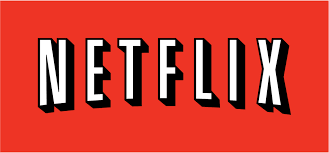Netflix Stock Analysis: Bullish View of Netflix

The article was written by Jacob Saphir, a Financial Analyst at I Know First.
Bullish View of Netflix
Summary:
- Positive Revenue Return
- Strong Potential International Growth
- Consumer Change in Demand
- I Know First Algorithm maintains a bullish forecast on NFLX
Background:
Netflix, Inc. (NFLX), is the largest internet television network provider offering online streaming of films, documentaries, television programs, and original programs, such as the hit series Narcos, by Netflix. With its headquarters in Los Gatos, California, Netflix has flourished from a DVD rental-by-mail firm from 1997 to offering viewers in over 190 countries online streaming of television contents commercial free and on demand. Posting earnings per share exceeding expectations for the past 3 quarters, investors are anxiously awaiting Netflix’s upcoming third quarter 2016 report as early as October 12, 2016. We maintain a bullish forecast for Netflix for the following reasons: revenue growth, potential growth internationally, and favorable consumer change in demand.
Positive Revenue Return:
Netflix has been consistently achieving revenue growth for the past ten years. Since the company’s fourth quarter release in December 31, 2015 to its most recent release six months later, revenue has increased from $1,823.33 million to $2,015.2 million, a 15% increase from the start of the year. Its sales revenue has increased from last year’s second quarter of 10.16% in 2015 to 28% in the second quarter for 2016. Net income between the same time period also soared from $26.34 million to $40.76 million, a 54% increase. Despite having a higher leverage ratio and accumulating more debt by issuing long term notes in order to fund the company’s ambitious growth into expanding the international market, Netflix continues to remain profitable and has the potential to continue its positive trend.
Strong Potential International Growth:
As David wrote in the previous article, Netflix is focusing its future by expanding abroad. Since 2010, after expanding to Canada, Netflix has aggressively been marketing elsewhere. Earlier this year, on January 6, Netflix made an astonishing announcement that it was now launching into 130 new countries. As we know, growth rates during the beginning business cycle is higher than when the market reaches maturity and growth slows, as we may be seeing in the US market. For example, according to Business Insider Australia, Netflix became available in Australia last year and in a span of one year, Netflix achieved a market share of over 20% of viewers over the age of 14. Some skeptics may claim, the number is high because of Netflix’s one month free trial period. However, 92% of the viewers are paid subscribers. Netflix has over 80 million subscribers in the US alone, and considering the population of the world, they have a lot more potential to surpass the number of subscribers domestically. On September 14, 2016, Netflix signed a deal with the world’s largest international TV and broadcasting company, Liberty Global. Liberty Global will offer over 25 million customers in 30 countries Netflix via cable set-top-boxes by the end of the year 2017. Netflix CEO, Reed Hastings, visions the company to launch in every country by the end of this year. The sky is the limit for Netflix to achieve in the hopes of reaching over 6 billion people in the world.
Change in Consumer Demand
As time passes, so does consumer demand. Today, younger generations are cutting their cable, by favoring internet TV over linear TV. Netflix subscribers benefit by watching their contents on demand, commercial free, and customize their viewings list to their preference. Netflix’s success can be attributed by Netflix’s philosophy shared by Reed Hasting, when he stated , “if the Starbucks secret is a smile when you get your lattee… ours is that the Web site adapts to the individual’s taste.” Consumers are finding it unnecessary to pay a linear TV cable provider offering packages with over 100 channels, when they watch less than 20 channels. Unlike cable watchers, Netflix subscribers are lured to the fact they are not forced to see commercials, so broadcasting companies can recoup some of the cost for broadcasting and producing their programs. With smart TVs becoming more accessible and affordable, the company stands to benefit.
Conclusion:
Although the stock is down from its year to date start, we are maintaining a bullish forecast of the stock. With positive revenue return, strong potential international growth, favorable change in consumer demand, and I Know First’s algorithm forecast, Netflix is considered a long term investment.
Past I Know First Forecast Successes with NFLX:
In such as the one dated on April 17, 2015, the algorithm accurately forecast a signal for Netflix. In a one year time span, the stock rose impressively by 71.71%, beating the S&P 500 negative return of 1.08%. The market premium calculates to an astounding 72.79%.
Below is the latest forecast I Know First algorithm released as of today on September 15, 2016. If we were to compare the forecast back in April 17, 2015, we can see both forecasts rate Netflix as a buy. The confidence level is even higher in our most recent forecast. If the previous forecast last April accurately predicted the stock would increase and it did by over 70%, the higher confidence level registered in the latest forecast below could indicate another high rate of return.
The forecast is color-coded, where green indicates a bullish signal while red indicates a bearish signal. Brighter greens signify that the algorithm is very bullish as it does at the top of this forecast. The signal is the number flush right in the middle of the box and the predicted direction (not a specific number or target price) for that asset, while the predictability is the historical correlation between the prediction and the actual market movements. Thus, the signal represents the forecasted strength of the prediction, while the predictability represents the level of confidence.


















